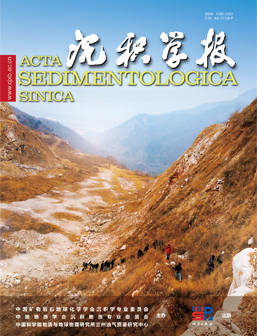Variation of the drainage density of Golmud fan in Qaidam Basin
doi: 10.14027/j.issn.1000-0550.2024.082
- Received Date: 2024-04-12
- Available Online: 2024-07-10
-
Key words:
- Key words: Qaidam Basin /
- distributive fluvial system /
- Golmud fluvial fan /
- river network pattern /
- drainage density /
- reservoir modeling knowledge base
Abstract: Abstract:[Objective] By studying the distribution law of river network plane of modern distributive fluvial system,the reservoir distribution of underground fluvial sand-bodies is predicted, which provides knowledge base for reservoir modeling and guides oil and gas exploration and development. [Methods] By using modern geographic information software such as Google Earth, Global Mapper and 91Satellite Map Assistant, the number and width of Golmud fluvial fan channels were collected according to equal interval survey lines, and the drainage density (Dw) of Golmud fluvial fan was calculated, and the variation of the drainage density of Golmud fluvial fan was summarized, and the main controlling factors of drainage density (Dw) were analyzed. [Results and Discussions] (1)Golmud fluvial fan can be roughly divided into three phases: proximal, middle and distal. The proximal drainage density (Dw) ranges from 0.089-0.198, and the average drainage density (Dw) is 0.143. The middle drainage density (Dw) ranges from 0.136-0.19, and the average drainage density (Dw) is 0.164. The distal drainage density (Dw) ranges from 0.16 to 0.37, and the average drainage density (Dw) is 0.25; (2) The main controlling factors of drainage density (Dw) are tectonic movement and geomorphic factor; (3) The difference of tectonic movement and geomorphic factor leads to the fluctuation of drainage density (Dw). On the contrary, different drainage density (Dw) can also be used to identify and restore underground palaeochanne and paleoenvironmental conditions, and guide oil and gas exploration and development. [Conclusions] The study of drainage density (Dw) of Golmud fluvial fan promotes the development of sedimentology in distributive fluvial systems, providing a new method for prediction of underground reservoir distribution, and provides a large amount of data for reservoir modeling knowledge base.
| Citation: | Variation of the drainage density of Golmud fan in Qaidam Basin[J]. Acta Sedimentologica Sinica. doi: 10.14027/j.issn.1000-0550.2024.082 |






 DownLoad:
DownLoad: